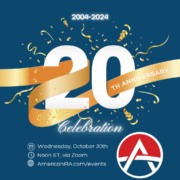Starting a New Self-Directed Solo 401k For Your Small Business
The Self-Directed Solo 401k is an amazingly flexible and powerful tool for long-term wealth building. The combination of tax-deferred growth, high payroll deduction/deferred compensation limits and the generous allowance for contributions by the employer make it particularly attractive for those whose businesses are generating substantial free cash flow and income potential.
Furthermore, unlike with IRAs, there are no maximum income levels that you must not exceed in order to fully enjoy the tax benefits of the plan. Small business owners and plan participants can contribute to a Self-Directed Solo 401k plan no matter what their income, though with conventional (non-solo) 401(k) plans the contributions of highly-compensated individuals could be limited by “top hat” rules, if rank and file participation in the plan is poor.
These provisions typically aren’t anything most solo 401(k) plan owners have to worry about, however, because the only full-time employees in these firms are typically the owner and his or her spouse.
Why solo 401(k)s?
A solo 401(k) plan may help you reduce your income tax liability. This is because the law allows you to deduct the entire amount of your contribution each year from your taxable income. This goes both for you personally, as the account owner and plan participant, as well as the business, which can write off contributions to employee pension plans, including 401(k) plans as employee compensation expenses, if they are incorporated.
If the business is not incorporated, then you can still make pre-tax contributions by deducting contributions for yourself from your personal income.
Setting Up for Self-Direction
If you want to invest your solo 401(k) results using self-directed strategies that allow for investing directly in alternative asset classes that aren’t normally associated with Wall Street (e.g., gold, precious metals, venture capital, private placements and direct ownership of real estate), then you need to engage the services of a reputable third-party administrator or custodian, such as American IRA, LLC.
To get started, visit www.americanira.com and open an account. Click on “Self-Directed Accounts), then on Self-Directed Solo 401k plans, and download and complete the Self-directed 401(k) application kit.
Why a Self-Directed Solo 401k?
Solo 401(k)s also have a number of other valuable benefits as well:
Higher Contributions
- Annual contributions up to $54,000 with an additional $6,000 catch-up contribution for those over age 50.
Borrow from Your Self-Directed 401k (Tax- And Penalty-free)
- Borrow up to $50,000 or 50% of your account value (whichever is less) for any purpose. Loans must be paid back within 5 years.
Checkbook Control
- Plan participants may have the option to have checkbook control over their retirement funds. American IRA acts as the record keeper for the Self-Directed Solo 401k plan.
Roth Provision
- A built in Roth provision is included which can be contributed to without any income restrictions.
Easy Administration
- You are the trustee of the plan. American IRA acts as the record keeper.
Funding your Self-Directed Solo 401k
Many of our clients who establish a new Self-Directed Solo 401k for their small business want to fund it by rolling over one or more existing IRA or self-directed IRA accounts into the new solo 401(k). Fortunately this is easily done for pre-tax IRA funds. You simply have to ensure that your 401(k) plan founding documents allow for this provision. This is best done when you’re first drafting your 401(k) plan, whether it’s a solo 401(k) plan or any other small business 401(k) plan.
If you’re planning on expanding the business and hiring more employees over time, the solo 401(k) plan may not be the best match for you. The solo 401(k) plan is specifically designed for self-employed individuals and single-owner businesses, including corporations and LLCs, as well as for ‘mom and pop’ businesses owned and operated by couples.
You can’t directly fund your pre-tax solo 401(k) with a rollover from a Roth IRA. The tax regimens of both types of accounts makes them incompatible.
Claim a tax credit
You may be eligible for a tax credit of up to $500 per year for up to 3 years, just for starting a solo 401(k) plan, SIMPLE or SEP IRA. This tax credit is designed to encourage employers to help their employees provide for their own security in retirement by offsetting the costs of setting up the plan. To claim the credit, fill out IRS Form 8881, or speak to your tax advisor.







